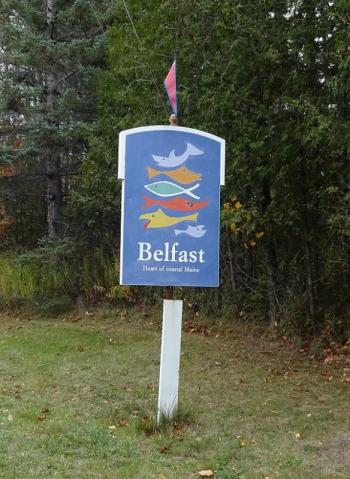Citizens meet again to address Belfast’s homeless issues
BELFAST — Concerned citizens met for a second time in an effort to address Belfast’s issue of homelessness. This meeting, which largely focused on increasing community awareness of the issue, took place at the Hutchinson Center Oct. 19.
One of several new faces at the night’s meeting included a student services coordinator, who attended the meeting, “to ensure youth are involved in the discussion,” she said.
One new addition to the group was James Gagne, of Preble Street, which is a social work agency based out of Portland. Despite the Preble Street program being based primarily in Portland, it has spread to currently encompass 16 counties, “thanks to a Veteran’s Association grant,” he said.
Gagne pointed out that Waldo County is one of only two counties in the state without a homeless shelter. This makes judging the scope of the homelessness issue in Waldo County difficult as there is a lack of interaction between those afflicted and the people trying to help.
Though lacking a homeless shelter, one thing shared between the coastal region and Portland is the vacancy rates and lack of affordable housing, Gagne said.
In addition to those entirely without a home, there is also a population of community members living in substandard housing. One example given at the meeting was a family of five that currently resides in a 10x10 foot shed located in Waldo County.
One issue confronted by the group is just how to count the homeless population to begin with, other cities rely on shelters and warming centers as a way to keep track of the homeless, neither of which are currently available in Belfast.
The focus of the group was largely what can be done in the immediate future to help those neediest citizens, especially given the encroaching winter temperatures.
Ideas ranged from a drive for sleeping bags, to mimicking other cities by tying scarves, hats, and other winter attire to telephone poles around town, to be taken by those in need.
The group is hoping to gather residents of Belfast to attend and speak at the next City Council Meeting, a move they hope will bring increased awareness of the problem.
Other issues discussed at the meeting were the actual logistics of certain proposed solutions. One suggestion, that seven local churches volunteer to house the needy one day each week brought questions of the potential liability of the churches, as well as more everyday issues, such as who would be responsible for supervising during the overnights, and who would be charged with cleaning the areas afterward.
Practical difficulties are not limited to homeless shelters though, when discussing the possibility of collaborative community drives for those in need, there is a question of where exactly such goods would be stored.
Gagne acknowledged the practical difficulties of operating a homeless shelter, noting that it can be helpful to look to other small town communities and the ways in which they have handled their own issues of homelessness.
One thing the group is in agreement about is the need to become a nonprofit group, which will allow for them to start fundraising and seeking out government grants.
One short term goal is to establish a warming center in Belfast, which is different than a shelter in that no one remains on site beyond a set time, typically four pm. The issue of where such a center would be located remains an issue. While the idea of working with Belfast’s soup kitchen was mentioned, they too are currently in the process of moving locations. The present location of the soup kitchen, Belfast Center, more commonly known to locals as “the red and white building,” is also home to Waldo Community Action Partners, a charitable non-profit serving low-income residents.
Beyond serving as a place for Belfast’s homeless to get out of the cold, a warming station would also allow the semi-invisible problem to be brought to the forefront. While such a place is a great way to start easing Belfastians into the issue of homelessness, Gagne acknowledged, “making people leave at four is really hard.”
Despite the potential shortcomings, a warming center would help to identify and keep track of Belfast’s homeless population, something Gagne stressed the importance as a starting point. It would also allow those in need to connect with available community resources, such as case workers. The Bangor Area Homeless Shelter serves as one example of a shelter that began as a warming center, as that is how it got its start in 1986, according to Gagne.
One short-term goal of the group is to reach out to the homeless community in Belfast by traveling to where they are known to stay, in hopes of getting a better idea of the number of impacted people in the area. There are a number of known areas in the community, though the vast majority of residents fail to realize their dual purpose.
While the issue of homelessness in Belfast may currently be an underrepresented one, there is hope that the famously tight-knit community will come together once again to help its neediest citizens. One member of the group, Laurie Roy, mentioned that she knows a number of people in the community who are both willing and able to help, but simply lack a direction to do so.
There is also strength in numbers when it comes to letting the City of Belfast know that residents are serious both about their concerns, and their commitment to address such concerns.
Fellow concerned residents are encouraged to attend Belfast’s next City Council Meeting, which is set for Nov. 1 at 7 p.m.
For more information, contact the Belfast Homeless Coalition, which next meets at 6 p.m. Nov. 2, though the location has yet to be determined.
Erica Thoms can be reached at news@penbaypilot.com





























